December 15, 2018
Skylar Lariviere was standing in a forest in northern Saskatchewan the last time she seriously considered ending her life. She held a weapon. She was ready to let go.
It was the teen’s third suicide attempt in the span of six months. This latest, in September, followed problems at home, which trailed a miscarriage — a wound exacerbated by the use of drugs and alcohol.
Then she realized her life was bigger than that dark moment.
“Like, there's more to this than what's happening right now,” she said. “I have a purpose in life.”
So she dropped the weapon and ran — fast.
She darted through the trees to escape the spot where the weapon fell, and the possibility of death.
She stopped running at the Northern Village of Pinehouse’s RCMP detachment.
“I begged them. I said, ‘I need help. I really need help.’”
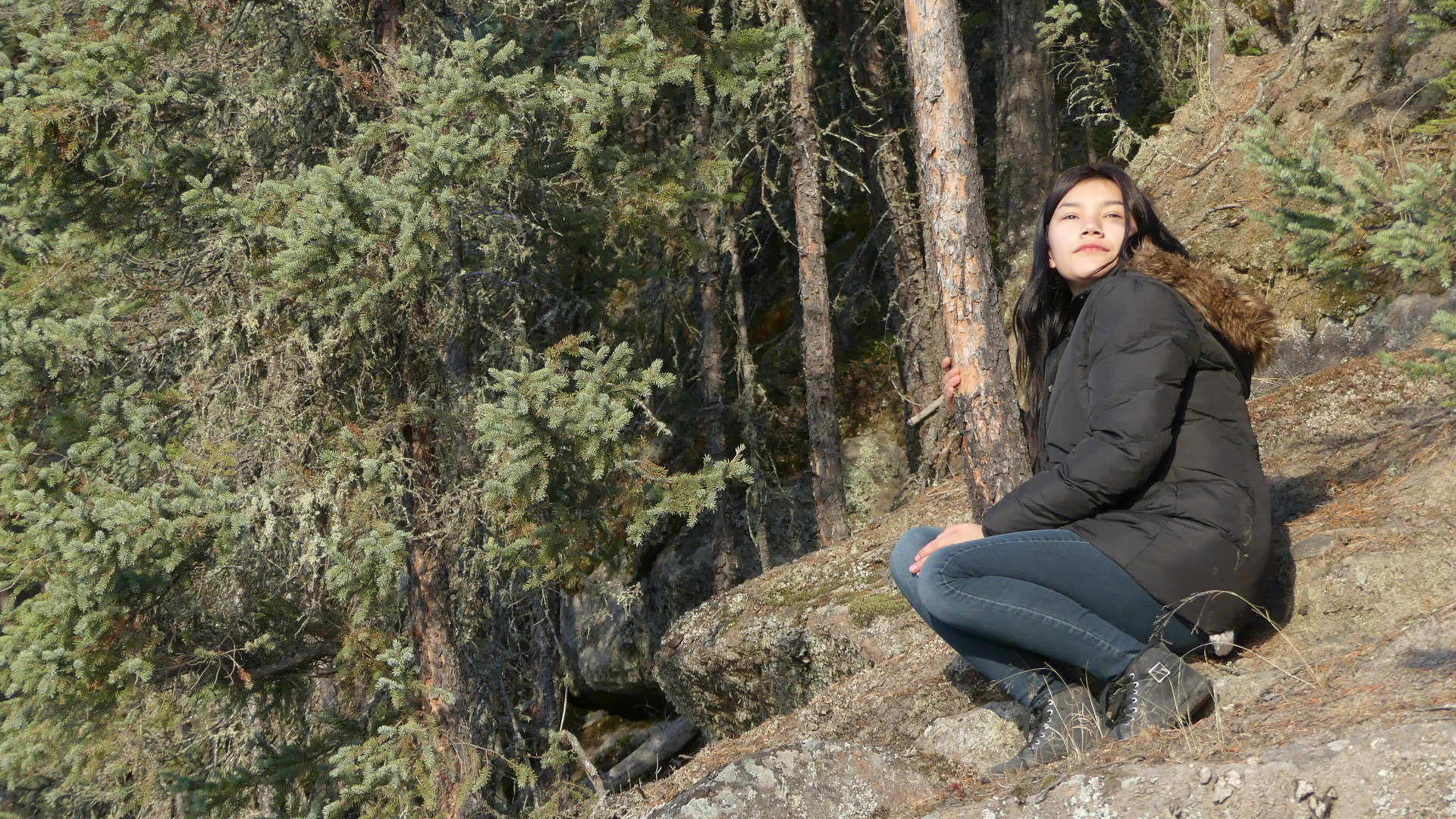
In 2017, Saskatchewan had the highest rate of youth suicide among the provinces, according to the Saskatchewan Advocate for Children and Youth’s 2017 Special Report on the Youth Suicide Crisis in Northern Saskatchewan.
The report says the rate of girls aged 10 to 18 dying by suicide has “increased significantly from 2003 to 2014.” Throughout Saskatchewan, 19 per cent of young people in Grades 7 to 12 have considered suicide and 11 per cent have attempted suicide at least once.
The rate of suicide among First Nations people in the province is more than four times higher than the rate for non-First Nations people.
The Pinehouse Photography Club is helping residents in northern Saskatchewan capture a beautiful perspective on life.
Lariviere’s state worsened each time she turned to alcohol or drugs to cope. A form of crack is popular with drug users in the small community of about 1,000. She, too, began using it.
“I was at my lowest to the point where I didn't want to eat. I didn't want to do anything,” she said.
In early fall of 2018, Lariviere began receiving mental health help from the local medical centre. There, she met Dre Erwin, a primary care nurse serving Pinehouse.
He’s also the founder of the Pinehouse Photography Club.
Erwin sent Lariviere a Facebook message inviting her to come to learn photography with the group. At first, Lariviere was reluctant to join. But she eventually did, and was surprised by her natural eye for it and what the camera allowed her to see.
“It actually amazed me. My first few pictures, I never thought that they're actually going to be that good,” she said.

A month later, Lariviere was again in the woods. It’s winter there by October.
She hung back from a crowd of clamouring amateur photographers. A guarded gaze was fixed on her face, until another kid cracked it with a playful comment.
“Awas,” she replied coyly, with a smirk. (It means “go away” in Woodlands and Plains Cree. It would seem it’s a good word to know if someone is teasing you.)
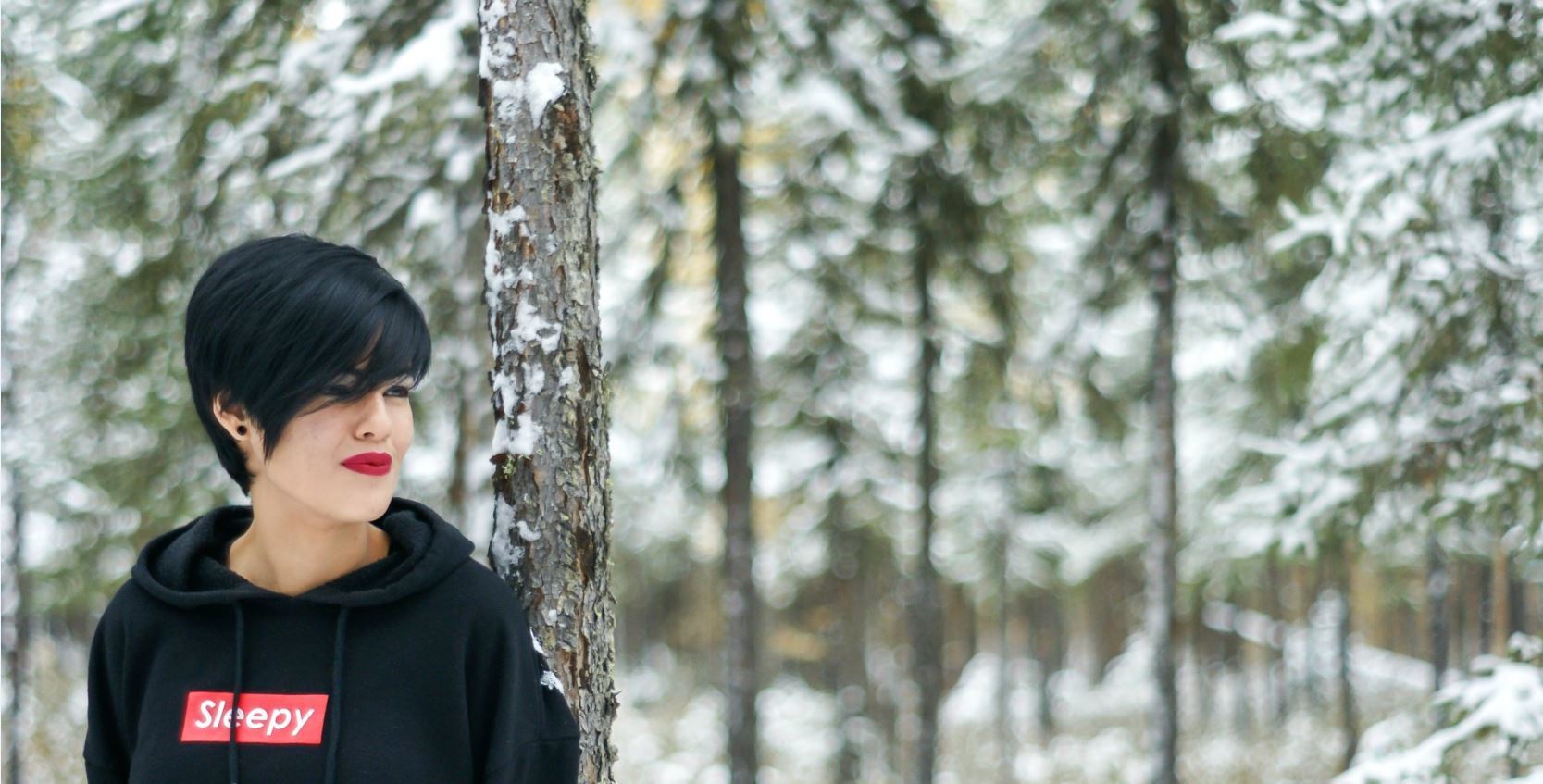
Still, she chose a different path through the woods, staying distanced from the others. She still prefers to be alone. She moved through the trees with quiet confidence. She was no longer running; she was planning.
This type of solitude has become useful for concentration. As she pressed the camera to her face, she smiled.
“I've realized how beautiful Pinehouse truly is,” she said. “Everything around me.”
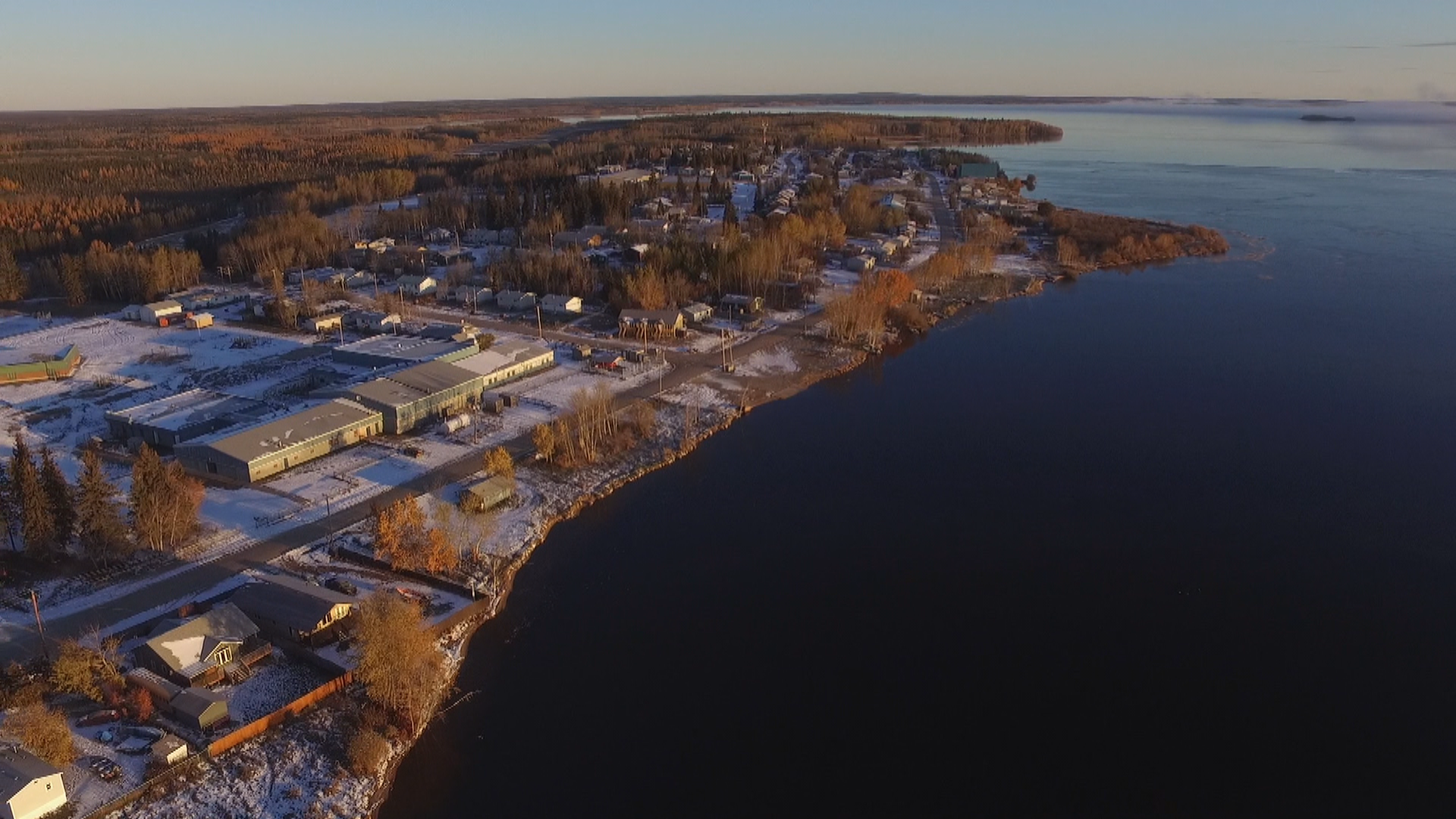
Erwin said one of his favourite things about teaching photography to Pinehouse locals is how it allows them to see “there's all this beauty that's all around us.”
Erwin recalls his own epiphany about the place. It came in the middle of the night, a few months after he moved to Pinehouse in December 2016 from Moose Jaw, Sask., to work as a full-time nurse. His dog needed to go outside. As he opened the back door of his house, facing the shore of Pinehouse Lake, groggy disgruntlement transformed into disbelieving awe.
“I remember looking up thinking, 'What the heck? What is out here? Are you kidding me?' ”
A sky of swirling emerald and aquamarine aurora danced above his back doorstep.
“Once I saw that I got hooked on it, right? I started going out and learning nighttime photography.”
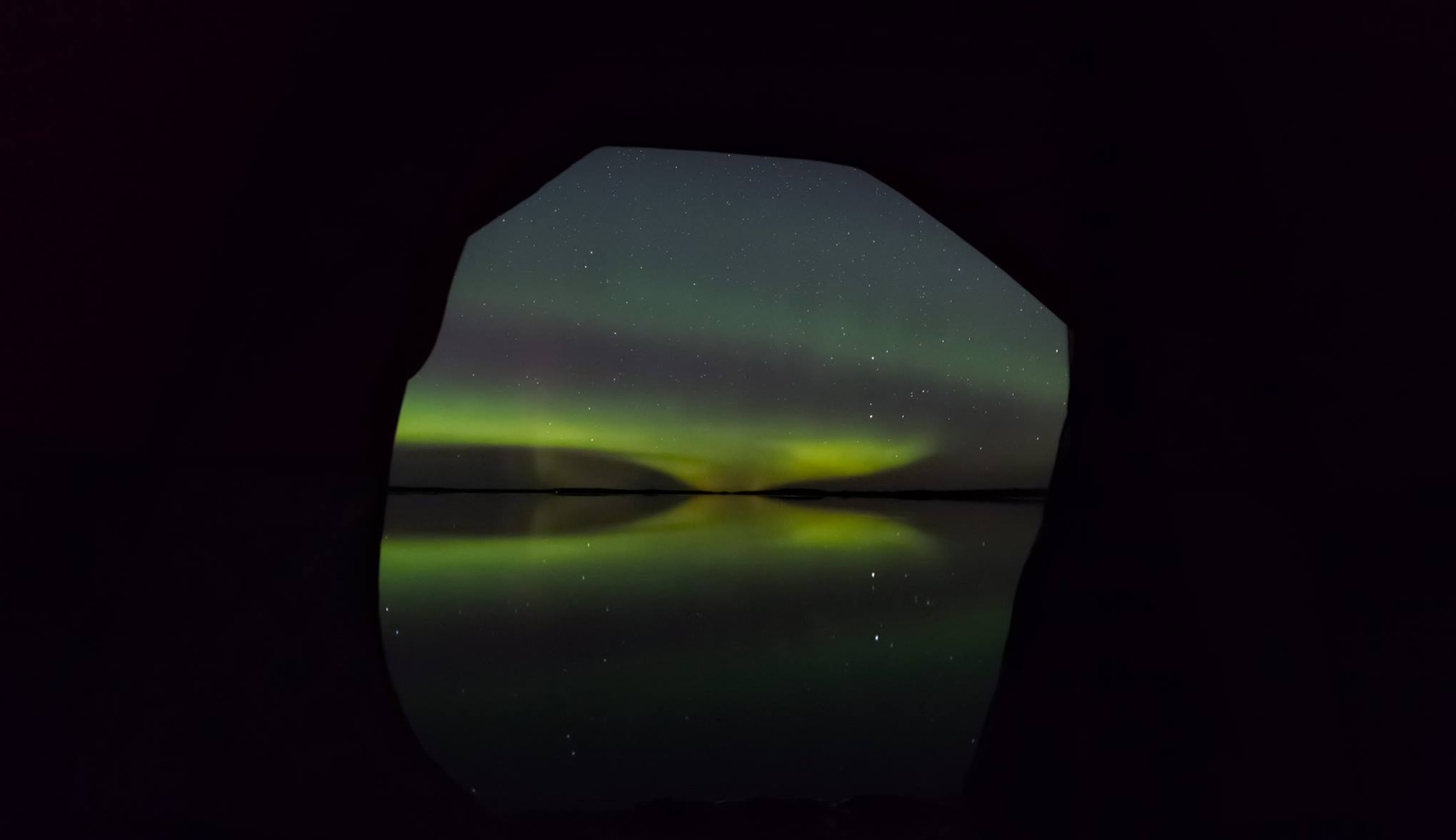
Erwin discovered photography in 2015 during a painful breakup in Moose Jaw. He knew the art form held healing power for himself.
But it wasn’t until he started posting portraits of Pinehouse’s northern lights that he realized it might have the same effect on others.
“It wasn't long after I started posting these pictures that a whole bunch of youth came to me and said 'Hey, man, I'd love to come out with you. I've never seen the northern lights like this before, or at all.' "
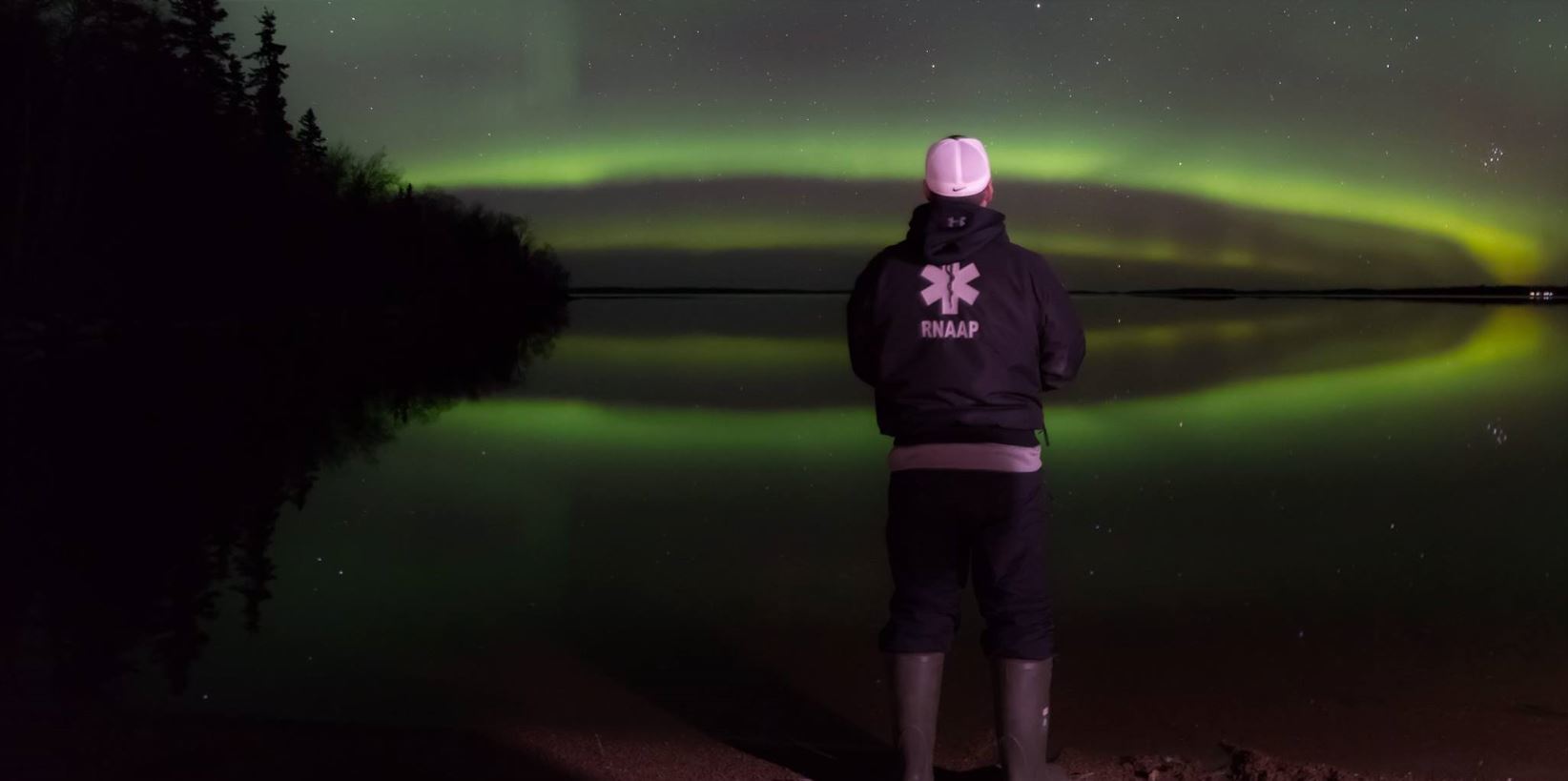
Pinehouse is the only community on Highway 914. A turn off the road reveals it is perched on a gentle hill that overlooks the lake. Rows of modest homes line its icy western shore. Its high school, medical centre, gas bar, restaurant and Catholic church rest on various levels of the slope.
For southerners, it is a distant dot on a Saskatchewan map’s top third, an area scattered with hundreds of patches of blue.
However remote, though, it would be a mistake to characterize Pinehouse as destitute. Much like its living sky, its land and water are bursting with life. Hunting and trapping offer a viable living for many residents. They're also a point of pride.
People here have kept their traditions for generations. In the 2016 census, 530 residents in the village identified a Cree-Montagnais language as their mother tongue.
Some English words do not translate perfectly to Cree. The word photographer, for example, doesn't really exist. Instead, the word omasinipihcikiw might be used. Some say it refers to someone who captures something while others say it means a painter.
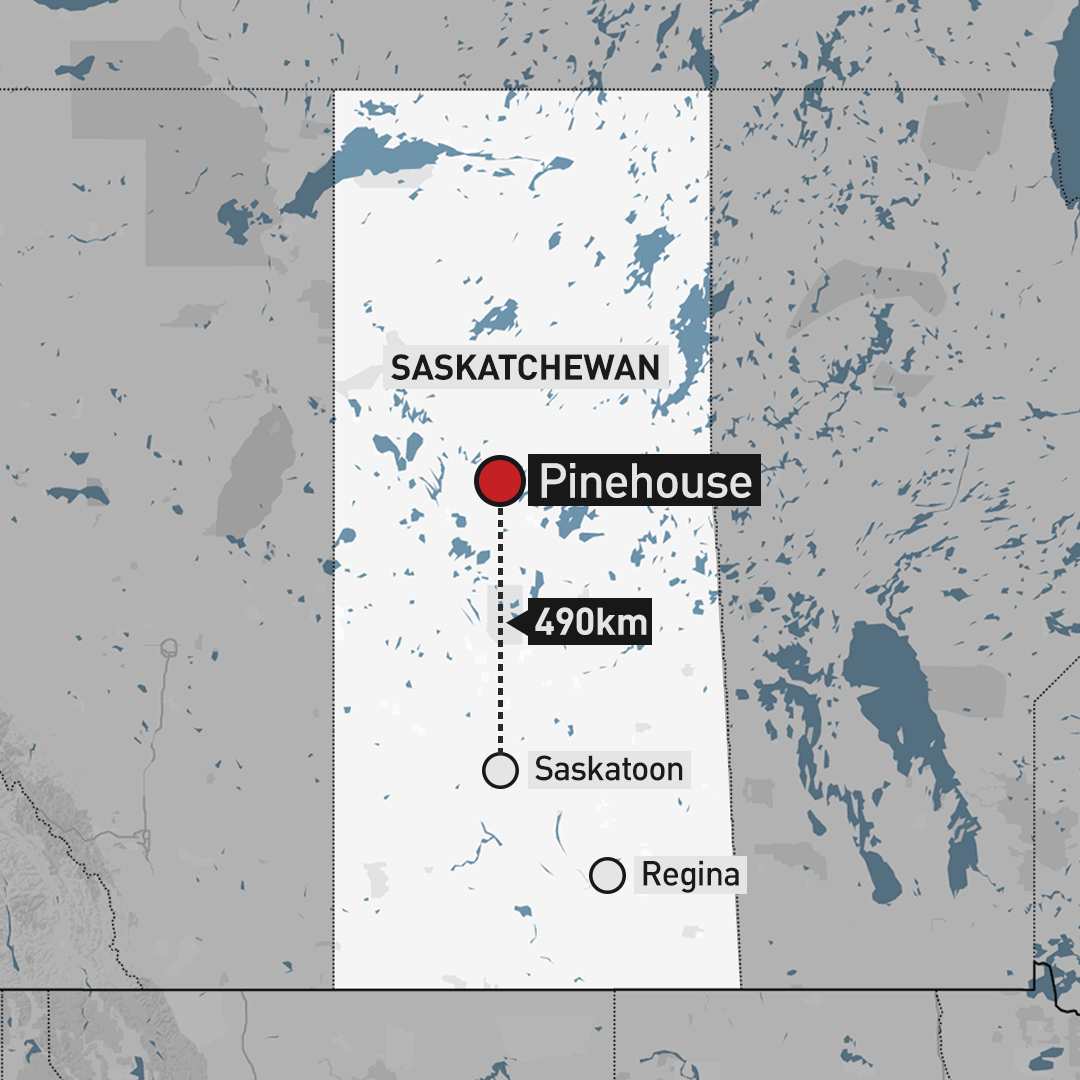
The last CBC News visit the community remembers is one from nearly four decades ago. In 1979, CBC’s The Fifth Estate produced a documentary on severe alcohol addiction in Pinehouse. It remains a stain on the community.
The story stuck with Caroline Ratt-Misponas her entire life. The 53-year-old Cree elder was born in the village and attended the Prince Albert Indian Residential School from 1972 to 1981. She earned her degree in social work from the University of Regina, then came home.
For nearly 19 years, Ratt-Misponas has served the community as the mental health social worker at the Pinehouse Health Centre.
Ratt-Misponas said Recovery Lake, an addictions treatment centre, opened in the years following the damning CBC News report. Today it is home to a 30-day addiction recovery program. Each month a new group is admitted for treatment, spring through fall.

Ratt-Misponas works in the same building as Erwin. She, too, has noticed a positive shift in Pinehouse thanks to photography. It was her idea to introduce it to Recovery Lake, which happened in spring of 2018.
“You want to get your mind off the cravings. You want to get your mind away from the withdrawing because your body is screaming, like, ‘Give it to me.’ ”
Ratt-Misponas said some people won’t come to talk therapy, but therapeutic photography offers a less intense, hands-on way for people to work through issues while keeping busy in a positive way.
She said fewer than 10 people took advantage of the cameras during the first 30-day detox session, but they told their friends. Then, it “bloomed."

Jenna Natomagan was one of the first people to pick up a camera at Recovery Lake.
Pinehouse has always been home for Natomagan, but her life changed course in 2015 when she began using crack.
For her, missing out on key parts of her youngest child’s life served as a catalyst for change.
“I didn't see the things she did and then all of a sudden she was six months and all of a sudden she was nine months,” Natomagan said. “I knew it was time to go. I knew in my heart that it was time to go, so I went.”
In her 30 days in detox, Natomagan took 3,000 photos, primarily of the sun.
“You just forget about everything because you're too busy looking at the beauty, you're too busy getting that perfect angle,” she said.
“There's no time to think about who's pissing you off. It takes all your problems away. That camera can do lot for one person.”
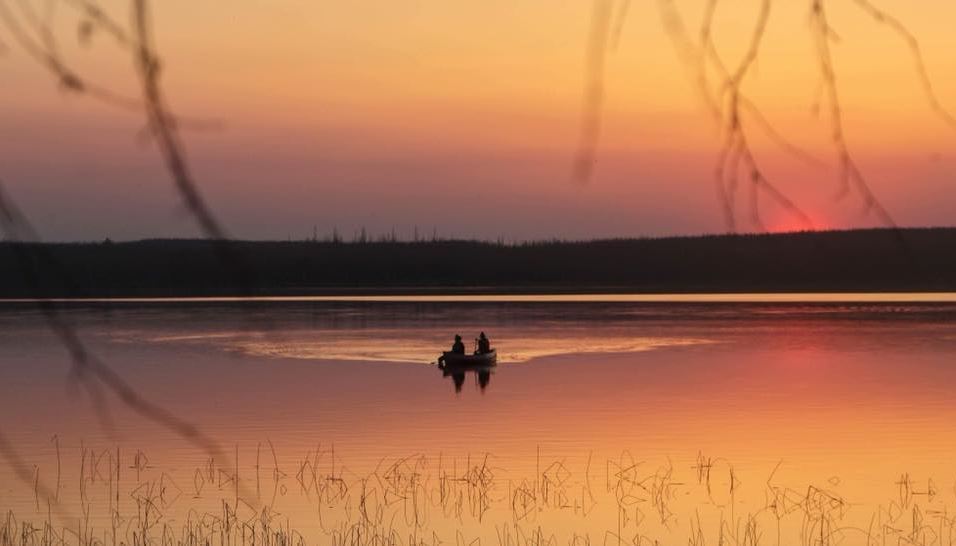
Today, the 33-year-old wife and mother of three has more good, sober days than not.
Natomagan said that while photography helped, the detox program was hard. And when she got out, the cravings returned.
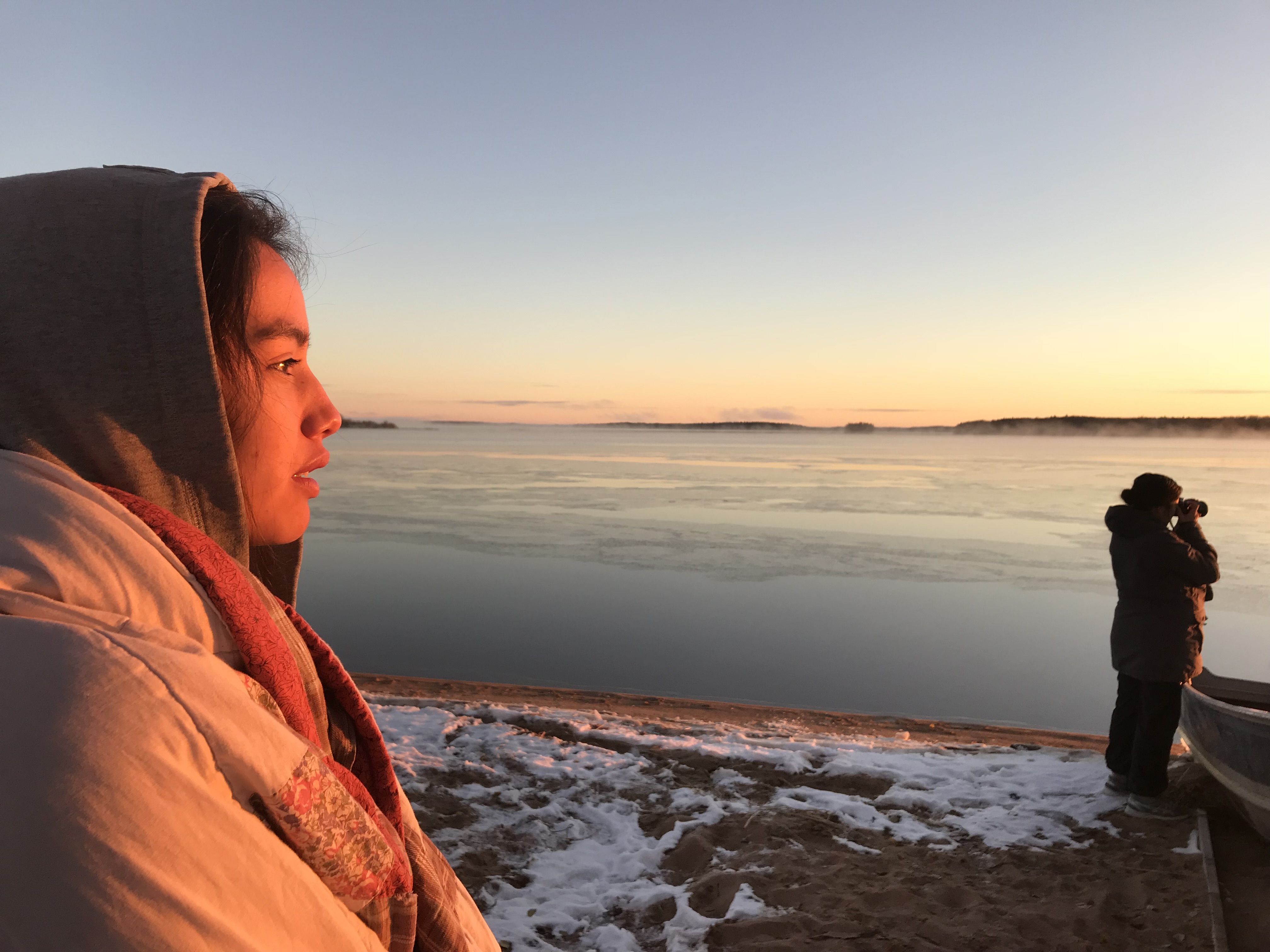
But Natomagan said thanks to the encouragement of a Pinehouse Photography Club member who had gone through similar struggles, she chose creating images in those moments rather than using drugs.
“If you're going through anything — depression, suicide or addiction, whatever you're going through — pick up a camera,” she said.
Natomagan said she’s seen photography change the lives of others in her community, from elders to teens.
Fifteen-year-old Louis Iron, for instance, takes a “deadly picture,” said Natomagan.
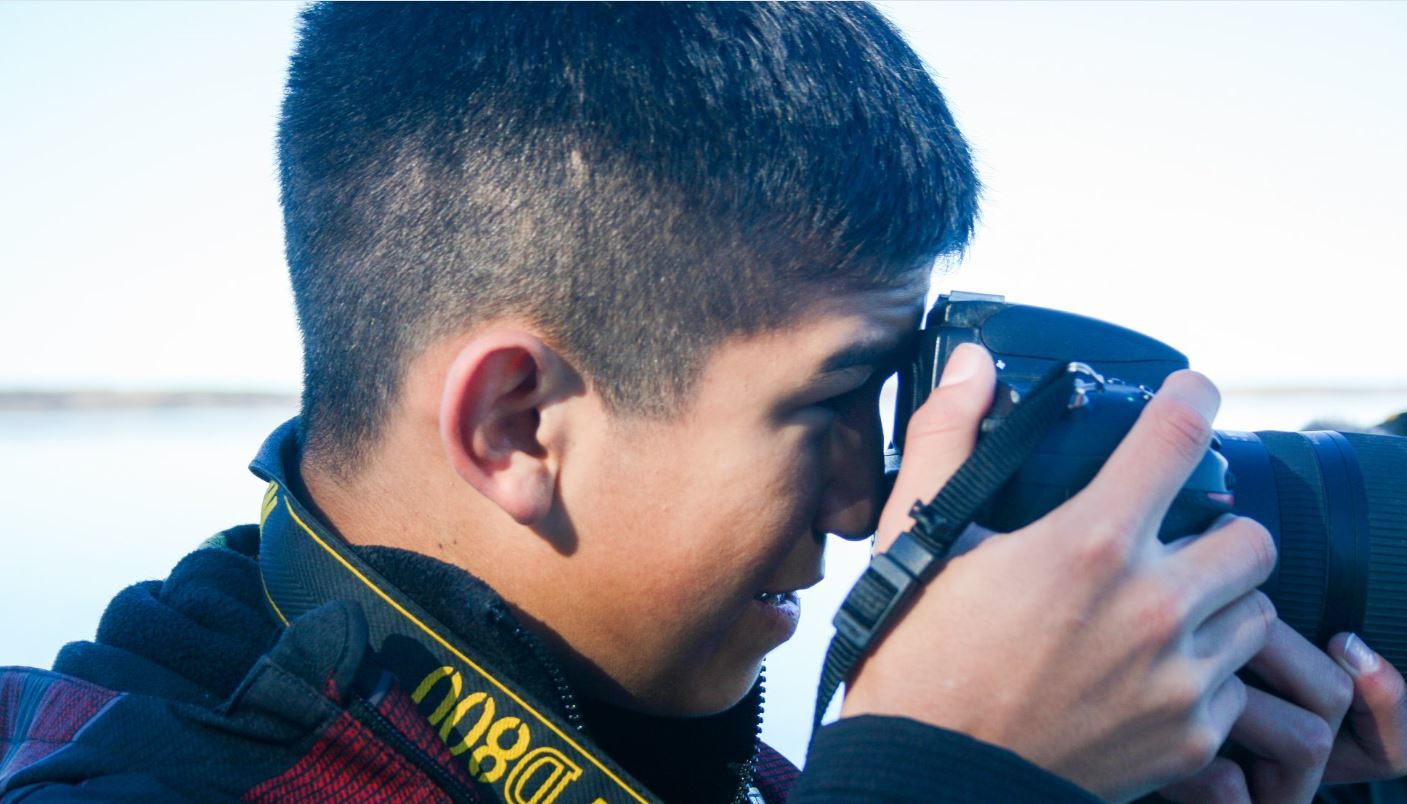
Like so many others, Iron met Erwin on a visit to the village’s health centre. It had been a tough summer for him. He was feeling out of sorts at home on the Lac La Ronge Indian Band and had been dealing with bouts of depression.
Then his stepfather committed suicide, leaving his family shattered.
“My siblings and my mom have been acting really strange. Not much laughing anymore,” he said.
Iron left his First Nation and moved more than 90 kilometres to Pinehouse to live with his grandmother in August, shortly after the sudden death. Things were dark for awhile, and his stepfather’s suicide continues to haunt him, but there’s more light to capture now, too.
“Taking pictures of the northern lights, taking pictures of nature, is really helping me a lot,” he said. “I feel like God sent somebody to create this group because it's actually really, really helping me a lot.”
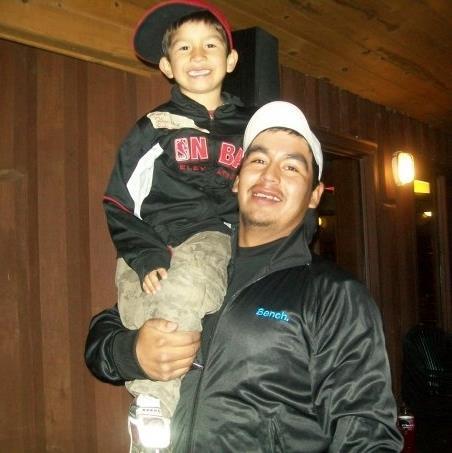
On a sunny October day, Erwin and Iron hiked to a place that offers a high vantage point of the lake. The pair laughed and talked as they wove their way through threes, navigating steep, slippery patches covered in snow. Tendrils of ice clung to frozen reeds along the shore. When the sun hit, a glistening fence of crystalline sculptures shone along the water’s edge.
Each time Iron snapped a photo, he and Erwin reviewed it together, the instructor offering feedback or a small tip.
“As a nurse it became very evident to me — when I saw a lot of youth come to the clinic with thoughts of suicide and depression and addictions — that some of these kids just need someone to show them that they love them,” said Erwin.
“I was there. I know what it's like to feel alone and to feel depressed.”
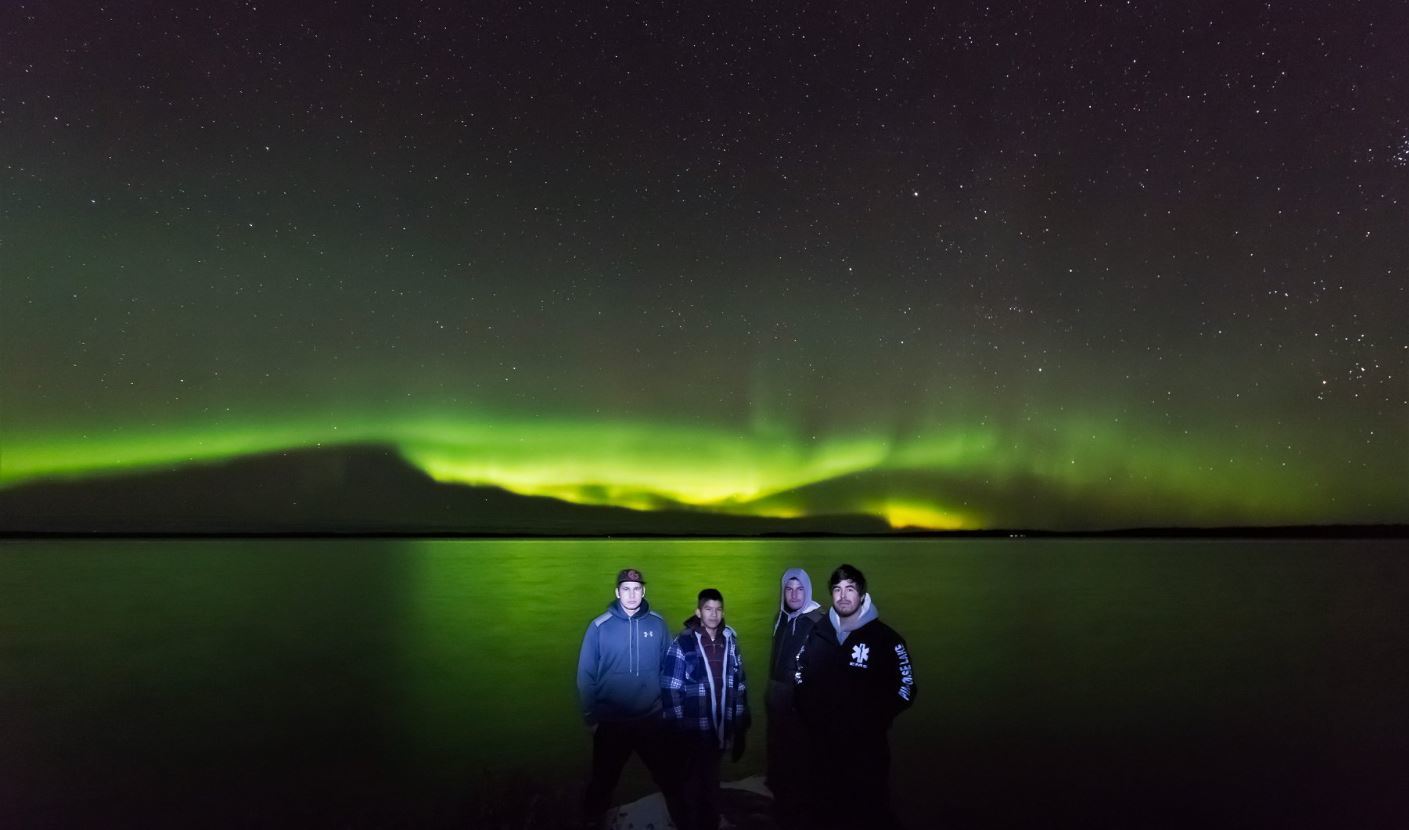
Since October, the Pinehouse Photography Club has been awarded a $70,000 grant from the federal government to set up a studio space in the community. The funding will also cover some equipment and supplies and wages for a full-time employee.
Erwin has also been contacted by social workers and therapists from across the country looking to start similar photography groups in their communities.
“I see this can be in any community ... all over the world,” he said. “Using photography as a form to help you communicate the way you feel and think is a non-verbal, safe way to increase your self-esteem and self-worth.”
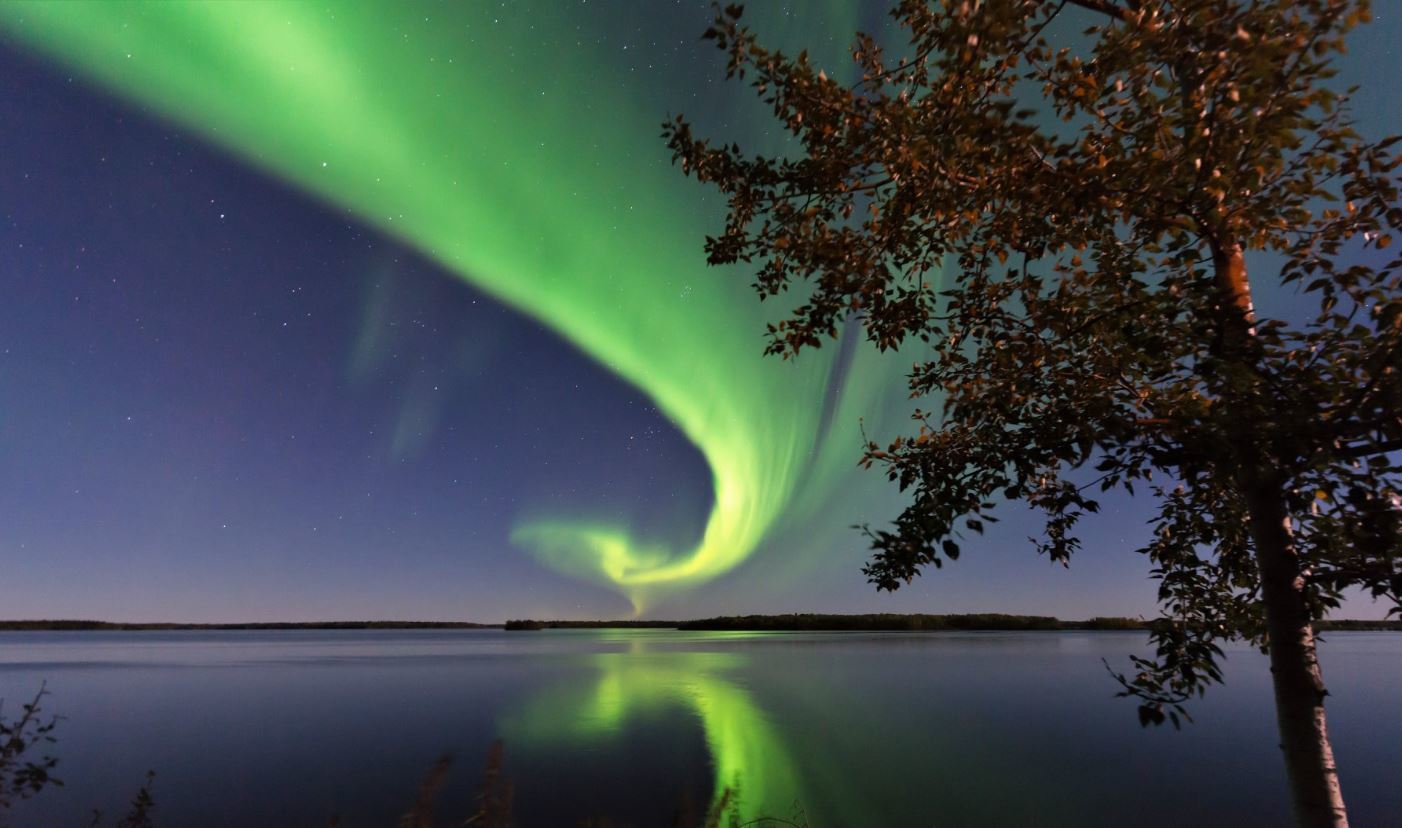
On clear nights, no matter how cold, Erwin and a pack of people can be found near the lake, snapping photos of the aurora. They take turns keeping a fire going. Others gather around tripods, Erwin buzzing back and forth, teaching about aperture settings as other clusters of kids play with lights during long exposure shots by the lake.
Sometimes, the aurora become boldest in the wee hours of the morning. So the whole group stays up around the fire, sharing stories, waiting for the perfect moment to capture. These aurora hunters have a bond that feels familial.
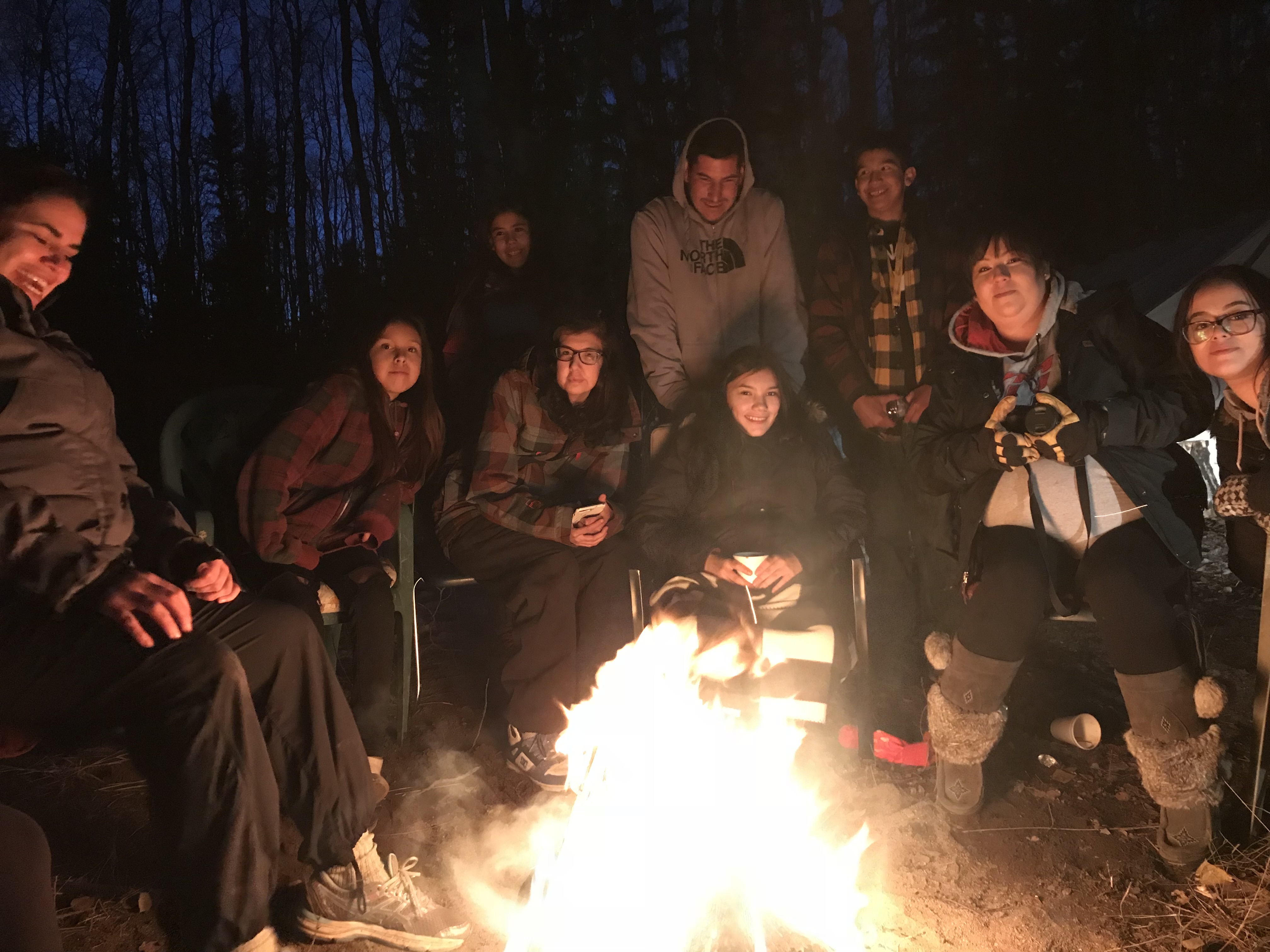
Throughout his time with the club, Iron has continued to experiment and has begun to develop his own style. A portrait of Lariviere, in particular, earned him lots of praise.
“Soon as Dre sent me the pictures, I'm like really shocked and really happy,” Iron said. “I'm like yelling in my room, ‘Oh my goodness, these are like really, really good.’ And, you know, I get my own signature on them and then post them on my photography page and next thing you know ... I'm just blasting with likes.”
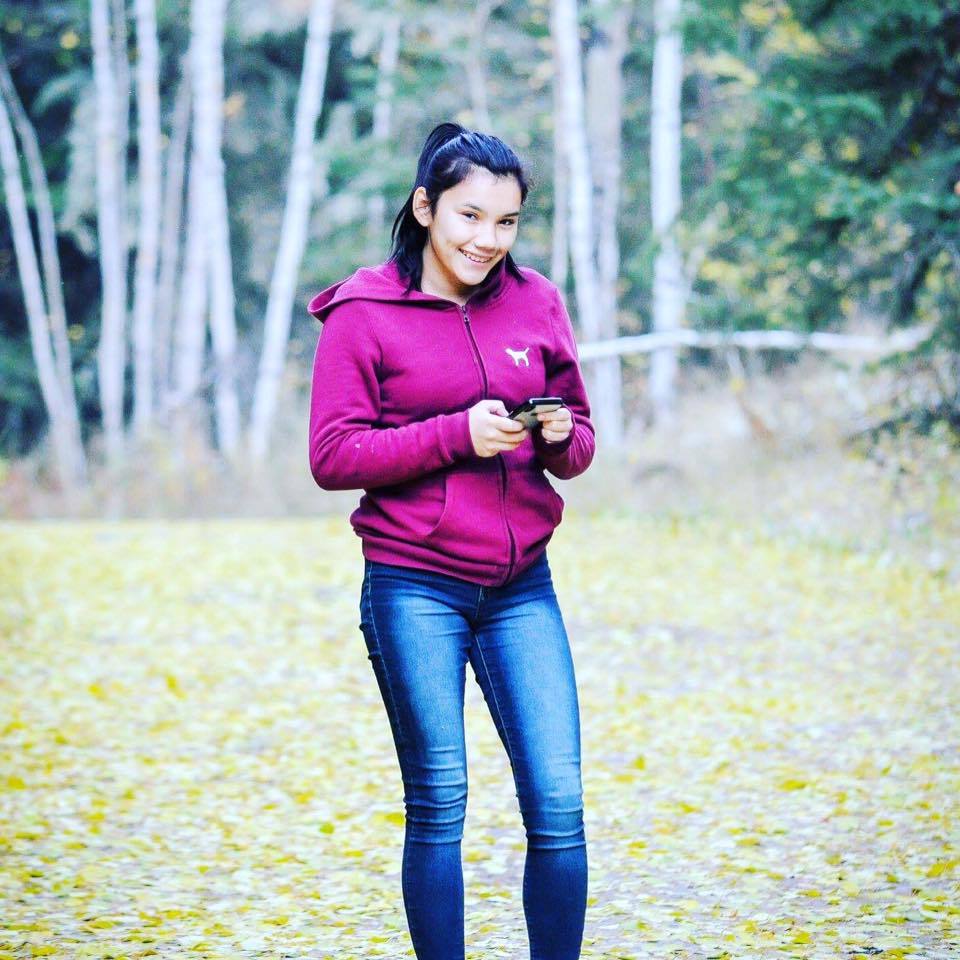
Erwin describes the positive attention as “addicting,” but in a good way. He’s encouraged all of the budding photographers to start their own Facebook pages to promote their work.
It’s not just their friends taking notice. Lariviere recalled a moment this summer when a couple from New York City came to visit and began to cry when they saw the northern lights for the first time.
“I cried, too, because of how happy they were,” she said.
It’s in these moments that Lariviere’s eyes take on a determined calmness. She sees her future clearly and it involves helping young people.
“When I get older I want to show them how much I became stronger and better and wiser and prove to them that you can be at your lowest and still go to the top,” she said. “Just believe all the time.”
Where to get help
Canada Suicide Prevention Service
Toll-free: 1-833-456-4566
Text: 45645
Chat: crisisservicescanada.ca
In French: Association québécoise de prévention du suicide: 1-866-APPELLE (1-866-277-3553)
Kids Help Phone: 1-800-668-6868 (Phone), Live Chat counselling at www.kidshelpphone.ca
Canadian Association for Suicide Prevention: Find a 24-hour crisis centre
If you're worried someone you know may be at risk of suicide, you should talk to them about it, says the Canadian Association for Suicide Prevention.
Here are some warning signs:
- Suicidal thoughts.
- Substance abuse.
- Purposelessness.
- Anxiety.
- Feeling trapped.
- Hopelessness and helplessness.
- Withdrawal.
- Anger.
- Recklessness.
- Mood changes.
